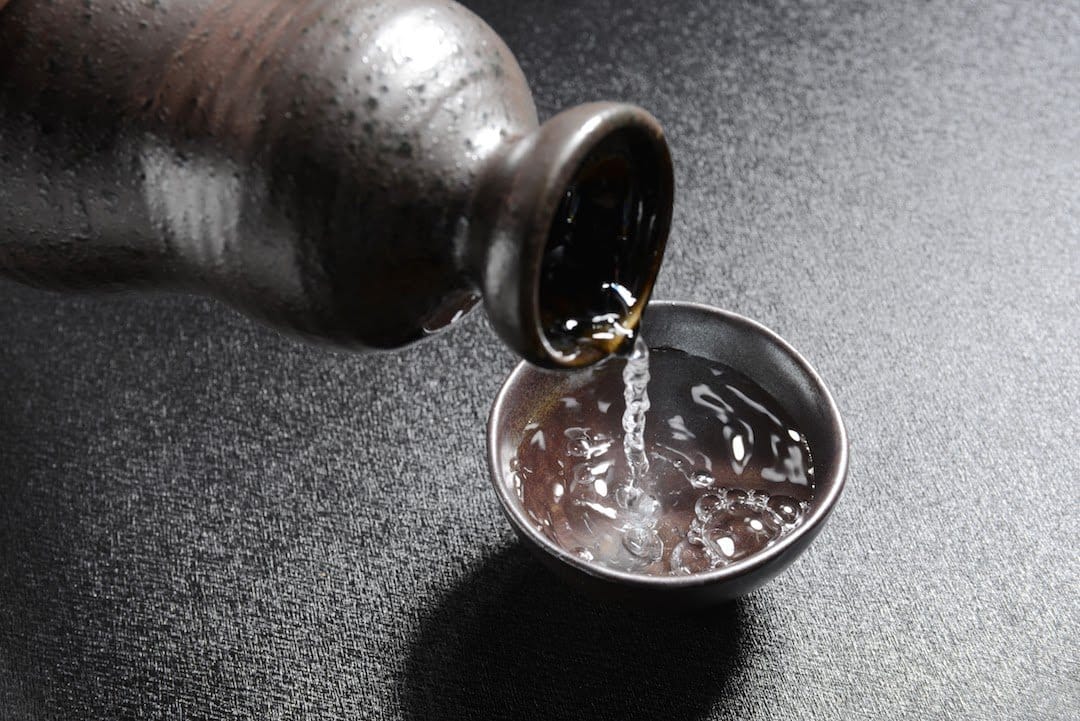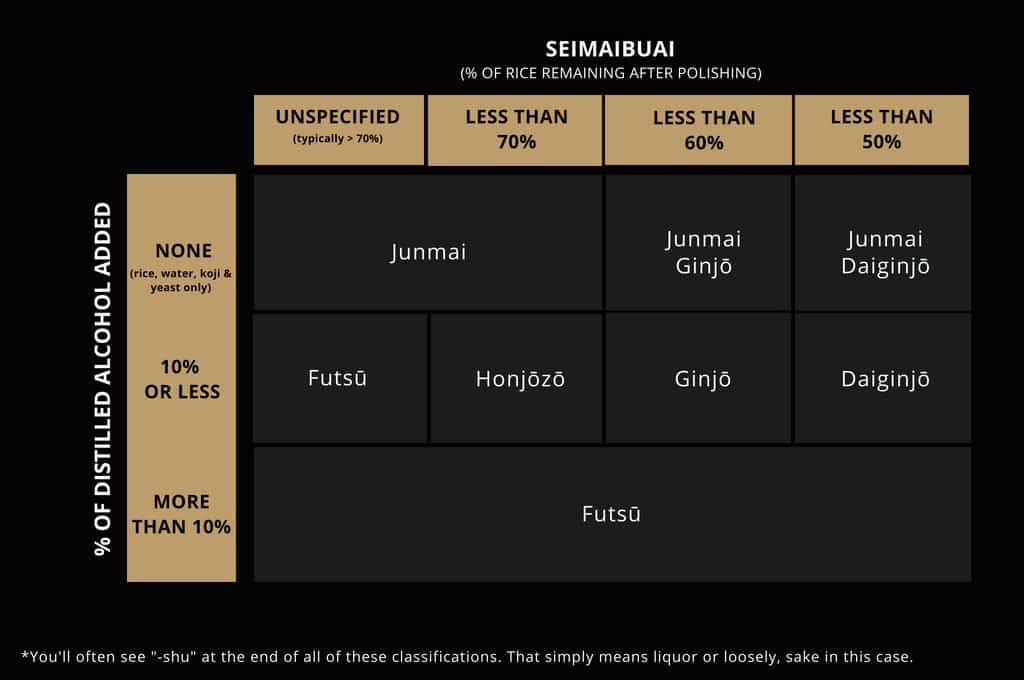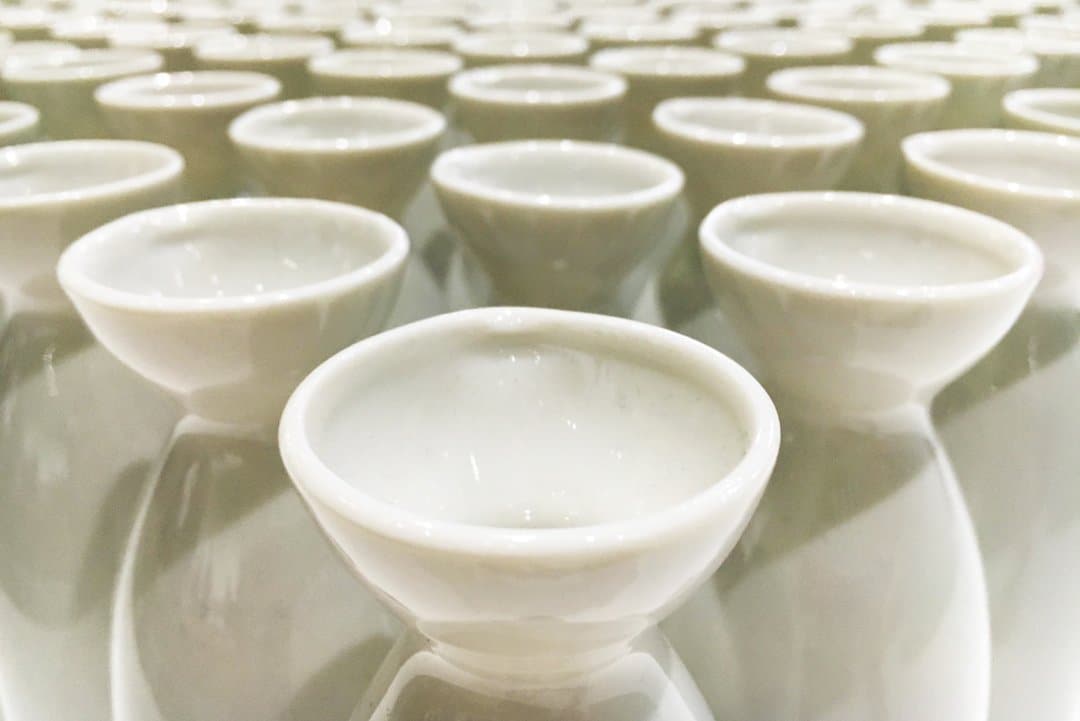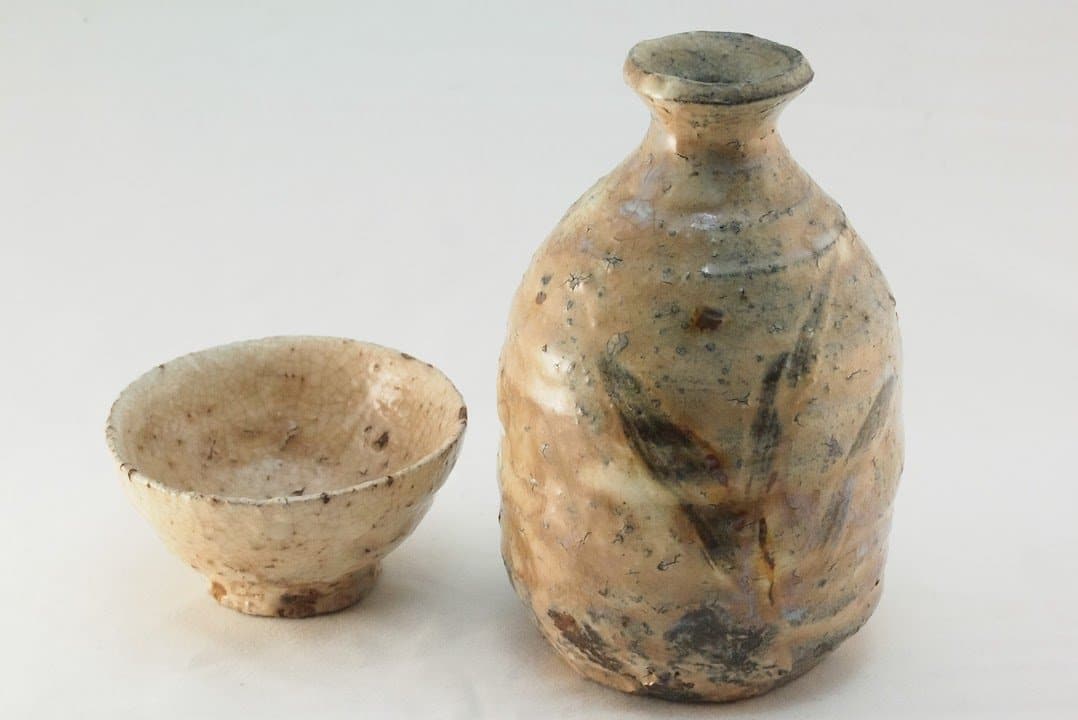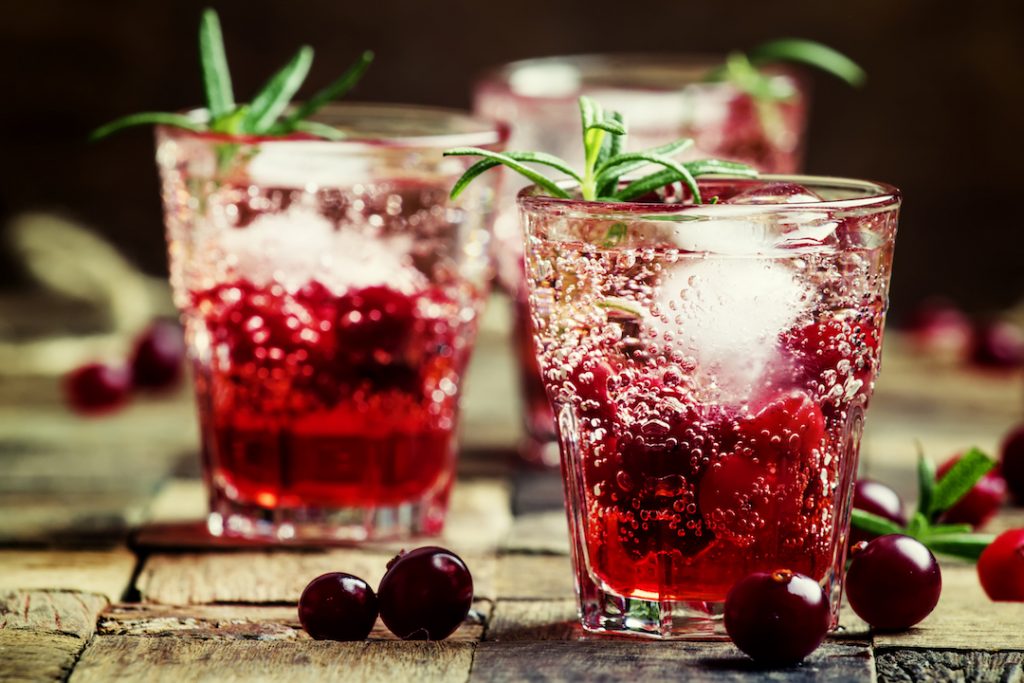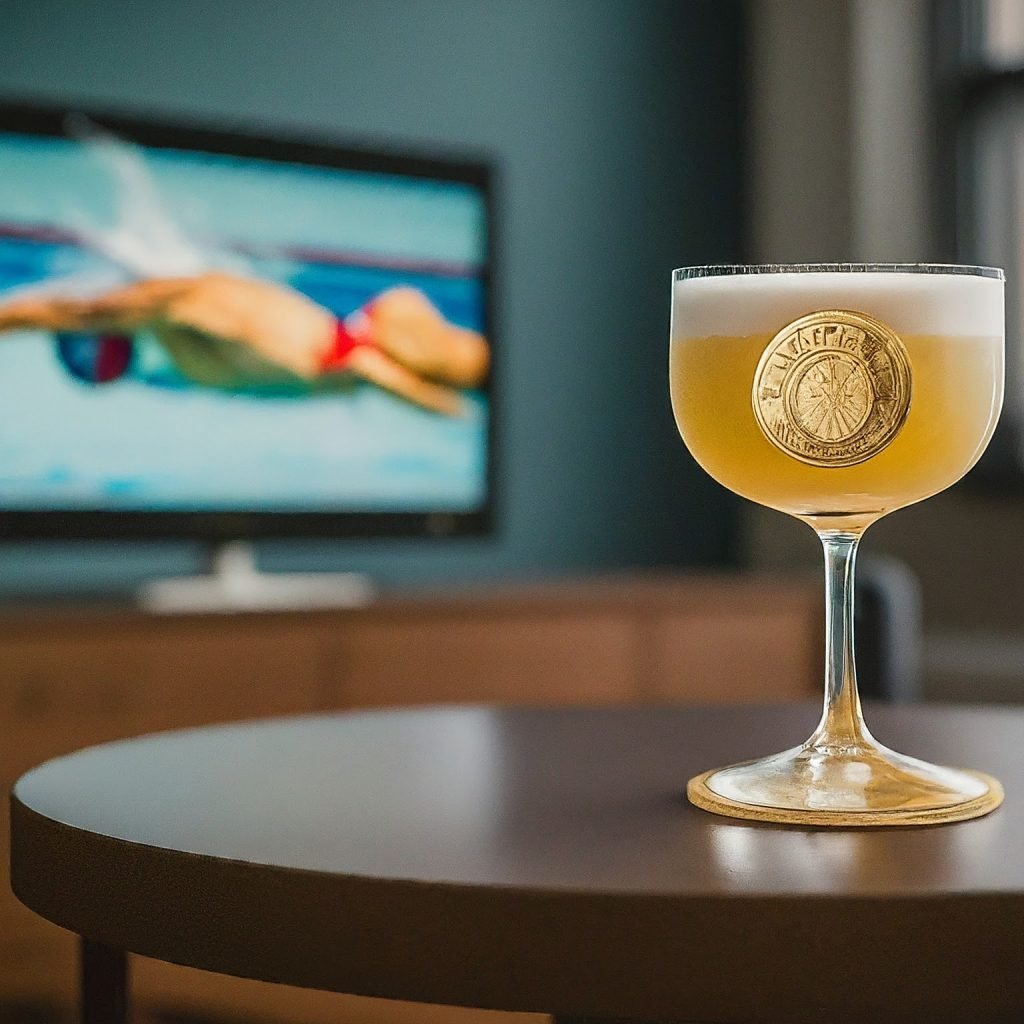You’ve made it! We’re finishing up our journey into the Japanese tradition of sake making with this third piece in our series. In our first piece we talked about the four critical components of premium sake…rice, water, koji and yeast. Then we dove into how sake is actually made, which if you recall is all about precision and control to deliver those clean, delicate flavors. Now it’s time to get drinking! So we’re moving onward to the different categories; what they mean and how to navigate that sake menu based on your inquiring mind and palate.
Premium Sake
Let’s start with the good stuff. Because you deserve the good stuff, Tippler Nation! Premium sake, with no additional distilled alcohol added, is classified by the rice milling rate. The more the rice was milled or polished the higher the quality. Here’s a new term to determine look out for on bottles to help you figure out the polish rate – seimaibuai (Pronounced: Say My Bu Eye) .
Seimaibuai is the determining factor regarding which bottle of sake belongs to which class among the premium categories. Now if we mill 10% of the outer layer of that rice, you have 90% of the grain remaining (which now makes it white rice). That remaining percentage is the Seimaibuai A seimaibuai of 90 doesn’t impress anyone. All premium sake must have a seimaibuai of 70% or lower. So, the lower the Seimaibuai the higher quality sake. Now, depending on the amount milled, we will have to get a little bit technical here and give you the different categories based on percents – yay math!
Categories
There are 3 tiers in this classification. Let’s try to simplify by using a plane metaphor. First, the overall class that we’re talking about here is premium, meaning no distilled alcohol added. Simply rice, water, koji and yeast as we discussed in our sake 101 article.. The overarching term for that is Junmai. So if Junmai is ever in the name of your sake you can be confident it is purely those ingredients with no additional distilled alcohol. Then you get into the rice polishing ratios as shown below. First class is Daiginjo, the highest category of premium sake available. Business class is Ginjo and Premium Economy is simply Junmai.
Premium sake is classified by the rice milling rate, or Seimaibuai.
First Class: Junmai Daiginjo
Seimaibuai: 50% or lower, meaning at least 50% of the rice is polished away
Aromas: Ginjo means the smell of apple, melon and banana, Dai means big…so Daiginjo means BIG apple, melon and banana aromas!
Try: Dassai 50 Junmai Daiginjo certainly has that big apple flavor and is a great example to start your journey.
Business Class: Junmai Ginjo
Seimaibuai: 60% or lower, meaning at least 40% of the rice is polished away
Aromas: Similar to daiginjo, this will also those fruity aspects but they are subtle and include earthy tones given the higher seimaibuai.
Try: Kinoene Masamune Yuuga Junmai Ginjo has a semaibuai of 55 and holds floral notes, giving those earthy notes one would find in traditional (and good) ginjo.
Premium Economy: Junmai
Seimaibuai: 70%, meaning at least 30% of the rice is polished away. However laws have recently changed and Junmai is not held to this exact standard anymore. It is required that they list the milling rate on the label though so you’ll know what you’re getting.
Aromas: Cereal, rice and mushroom notes with a sense of umami…or “savory deliciousness”
Try: Fukuju Junmai Mikagego is clear and smooth and quite ricey, which I know you would expect of all sake but it really stands out here.
Now, if you simply see any of the class names above without the word Junmai anywhere in sight, you still know the seimaibuai level as outlined above, but you also know that up to 10% of another form of distilled alcohol was added as well. To stick with our plane metaphor, I”d consider these economy class with extra leg room 😉 For the actual Junmai level, that is called Honjozo when distilled alcohol is added. Why add distilled alcohol at all? Many believe it makes it more fragrant while also smoothing out and lightening the flavor a bit. Many still consider these premium sakes based on the rice polishing level, but taste around and decide for yourself!
Confused yet? Let’s try a quick visual before we jump into the non-premium sake (which is the last row, and some may say the middle row, in this visual):
Two more style terms to be on the lookout for across all of the classes we discussed above?
Nigori – this means unfiltered. So at the end of the process the sake is passed through a looser mesh allowing some of the grain solids that are left after the fermentation process to pass through. This leads to it being cloudy rather than clear with a bit more complexity and texture.
Namazake. This is unpasteurized or raw and typically tastes a bit more lively and sharp than pasteurized sake. it’s become more popular in recent years, but it’s important to store it and consume it properly.
What About Non-Premium Sake?
Maybe you are thinking, can’t I just get a bottle of something basic and still enjoy sake? Why do I have to be so fancy and fly premium all the time? The answer is you don’t have to…and it’s that bottom row in the visual we shared above. So let’s explore what non-premium really means. Many sakes may come in a box format instead of the bottle, which likely means it’s not premium. House Hot Sake at your local Japanese spot in the US? Likely not premium.
To be clear, when we say it’s not premium it doesn’t mean it’s crappy sake, it’s still typically good quality, often made by bigger companies. It still goes through the same rigorous process of rice milling, washing, soaking, steaming, and the careful fermentation process in exceptionally clean facilities. For the non-premium stuff, just think of it as coach-class with a larger quantity (up to 50%) of non-rice distilled alcohol added. Regardless of where you sit on the plane, you’re going to get to your final destination. You just might be a bit less comfortable and enjoy yourself a little less in coach, but you’ll still get there. And who knows….maybe you’ll actually like it better! Particularly if you prefer hot to cold.
To be clear, when we say it’s not premium it doesn’t mean it’s crappy sake…
Futsu (non-premium) is the only type of sake that can have as high as 50% distilled alcohol. This is best consumed warm to hot, allowing for a better experience of a lower grade. For premium sake, there is a strict limit that says no more than 10% of distilled alcohol can be added to the sake to create the final product. So whether 10% or 50%, why add booze to the booze at all? There are two reasons:
One is to inflate the volume that is produced to make it cheaper (non-premium). Because you are stretching the sake with cheaper to make non-rice distilled alcohol, the abv is not necessarily higher in these sakes. They’re just swapping one alcohol for another. Sorry! The second reason for adding non-rice based distilled alcohol is to enhance the flavor. This is the rationale when 10% or less is added though, much more than that and the flavor enhancing rationale starts to fall apart. The idea of doing this to smooth out the texture and jazz up the flavor a bit is A-OK in our book, but again…it’s up to you to decide for yourself what tastes best to your palate. Junmai premium levels, non-junmai (still often considered premium) levels or Futsu?
Tasting Premium Sake
Ok, back to the good stuff now that we’re ready to drink! When you think of sake you may think to drink it warm, in a cup traditionally called an ochoko. Drinking it like this is great and pretty common but most premium brands are best served slightly chilled. Recently, due to advancements in brewing, many final sake products can have components and flavors destroyed if heated. Premium these days usually means you will want to buy a bottle of one of the aforementioned bottles above and refrigerate is until it’s slightly chilled.
Then sit back, get your tokkuri (the carafe from which you pour!) and ochoko out and get to tasting! You deserve it after diving deep and educating yourself on sake with us. As always, let us know what you’re discovering and enjoying (or not enjoying!). And if you missed our first two articles you can brush up here with our full sake series. Kanpai!
